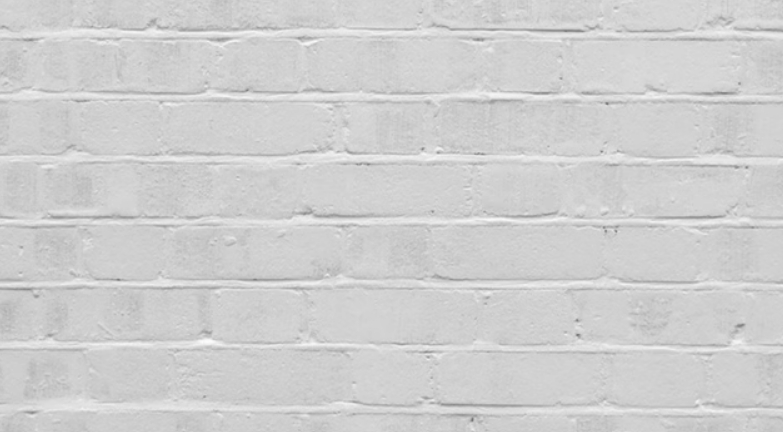Why a Pair of British Officials Watched Paint Dry

Pictured above is a brick wall painted white. At the time that picture was taken, the wall had been newly painted, so the picture, really, is of paint drying. It’s not a lot of fun to look at, which shouldn’t be surprising. After all, the phrase “like watching paint dry” is an expression that means “boring” or “tedious,” and for good reason.
But on January 25, 2016, two people met in a basement somewhere in Great Britain to look at a video of that wall. For nine hours, they watched as nothing discernable happened — sure, the paint dried a bit, but who could tell? — and then, just for good measure, they came back the next day to watch an hour or so more.
Why?
Because it was their job. And because filmmaker Charlie Charlie Shackleton was convinced that it shouldn’t have been.
Charlie Shackleton is an independent documentarian who, like many indy filmmakers, was very concerned about keeping costs down when making movies. And he was also very concerned about censorship — or, more accurately, he was very much against the idea. As a 13-year-old, he became a fan of the movie “Fight Club,” but he’d later learn that he hadn’t actually seen the entire movie. As he wrote in Vice, “One day, while poring through the trivia section on the film’s IMDb page, I noticed another tab labeled ‘alternate versions.’ There, I discovered that the cut of the film I knew so well was in fact censored, with around six seconds removed by the BBFC [the British Board of Film Classification] to ‘reduce the sense of sadistic pleasure in inflicting violence.'” That was ridiculous, he felt. And then he learned that the filmmakers had to pay the BBFC for their efforts to censor their films.
As Shackleton explained, if you want to distribute a film in the UK, you need a license from the BBFC. The licenses have a flat fee and a per-minute charge tacked on; in 2016, they cost £101.5 (about $125) plus another £7.09 (about $8.80) per minute of the film if you wanted your movie to be eligible for a theatrical release. A 90-minute movie, therefore, would cost about £750, or just under a thousand U.S. dollars. For a large movie studio, it’s not a big deal, but for an indy filmmaker, that may be a large part of the budget.
As a documentarian, Shackleton wanted to bring attention to this problem. And the BBFC’s own rules would give him that avenue. As the Washington Post reported, “the board promises to watch any submission it receives ‘all the way through’ [in the BBFC’s words] before evaluating its content and assigning a rating.” So Shackleton decided to keep them to their promise — and to bore them. He found a brick wall, painted it white, and set up his camera, pointed at that wall. And then, as he wrote on Kickstarter, he “shot fourteen continuous hours of footage, on crisp 4K digital video” of the paint drying. He asked the Kickstarter world to help fund the licensing fees; his minimum ask, £109, covered the flat fee and the first minute. Every pound raised beyond that would “be put towards the cost of the certificate, so the final length of the film will be determined by how much money is raised.”
He raised £5,936 — enough for a ten-hour, seven-minute movie. And he submitted a film of that length to the BBFC for their review. As promised, the Board viewed the film, as Mashable reported: “The BBFC received the footage and dutifully planned for two examiners to watch the film in its entirety on January 25 and 26” of 2016. The reason for the two-day time period? Per Mashable, reviewers are “only allowed to do nine hours per day,” and Shackleton’s submission went over that limit.
The BBFC didn’t seem to mind the chore. A spokesperson for the organization shrugged off the piece of protest work, stating that “examiners are required to watch a very wide variety of content every day, so this didn’t phase them.” And ten days later, the Board released its rating of the aptly-named “Paint Drying,” giving it a “U” or “Universal” rating, which deems it “suitable for all ages.” Apparently, boring people for ten hours doesn’t meet their definition of “sadistic pleasure in inflicting violence.”
Bonus fact: In 1994, the Motion Picture Association of America (MPAA) — the organization that rates movies in the United States — introduced a new rating, PG-13. The reason? “Indiana Jones and the Temple of Doom” and “Gremlins” were too gory for many parents. Both films were given a PG rating, recommending parental guidance but not restricting children from watching the movie — and lots of parents complained. Steven Speilberg, the director of the former and whose label, Amblin Entertainment, co-produced the latter, was the subject of many of those complaints, so he took action. As he told Vanity Fair, “I remember calling Jack Valenti [then the president of the Motion Picture Association] and suggesting to him that we need a rating between R and PG, because so many films were falling into a netherworld, you know, of unfairness. Unfair that certain kids were exposed to Jaws, but also unfair that certain films were restricted, that kids who were 13, 14, 15 should be allowed to see. I suggested, ‘Let’s call it PG-13 or PG-14, depending on how you want to design the slide rule,’ and Jack came back to me and said, ‘We’ve determined that PG-13 would be the right age for that temperature of movie.’
From the Archives: The Power of Being Bored: Maybe watching ten hours of paint drying isn’t a terrible idea.
